How to 'Do It Differently'
Using an Occupational Therapy perspective (also known as a model of practice or 'thinking framework') we can discover useful ways to facilitate change when things are not working as we need them to.
To begin with, lets think about three key factors which influence the success or failure of any task for all of us. These are :
- the Environment or context in which the activity takes place
- the Activity we need to do (an 'occupation' in OT talk)
- The Person performing the Activity (your child in this instance).
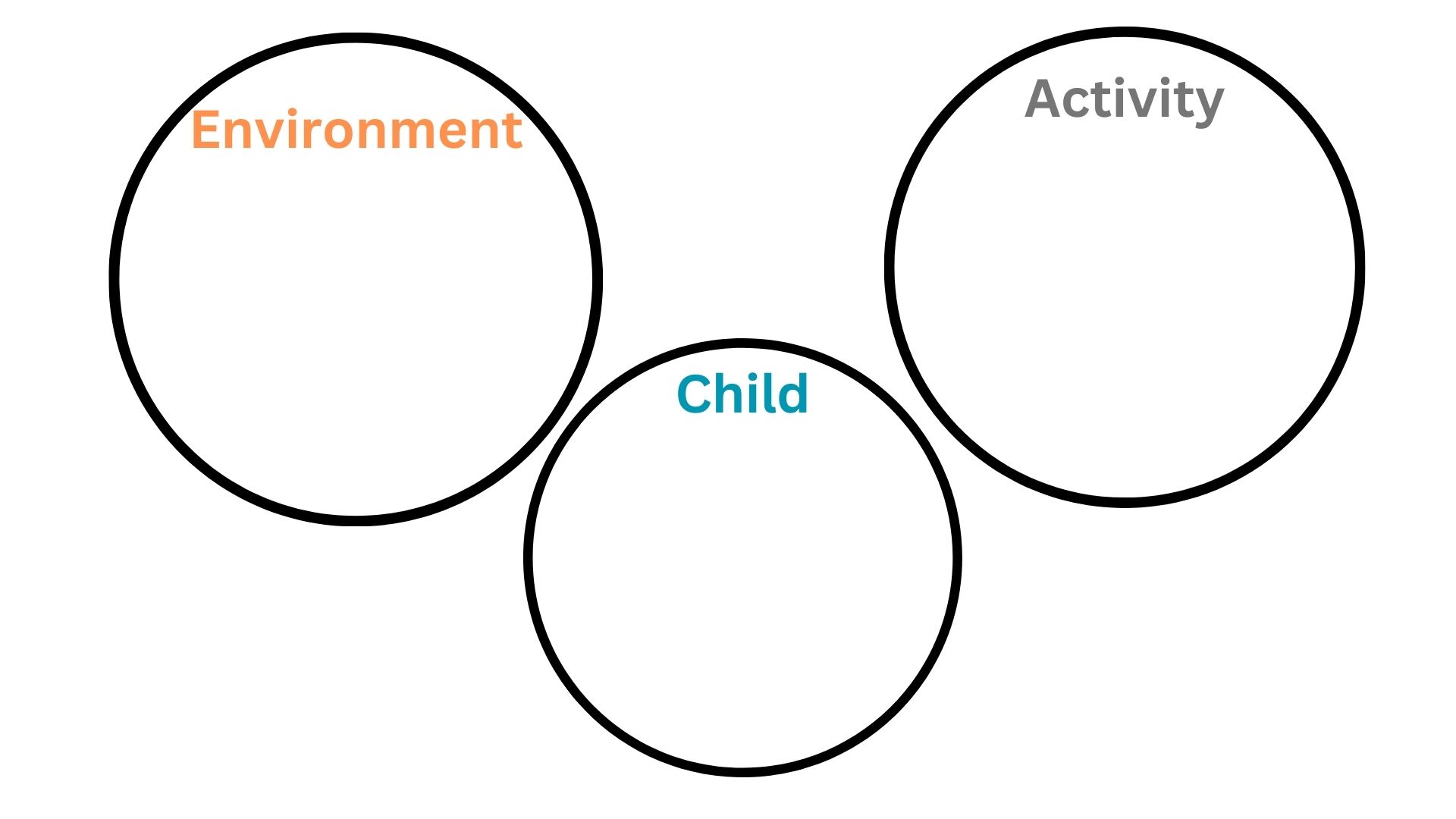
For our efforts in any given task or activity to be successful, each of these three key factors play a crucial part.
The image below sketches out some of the features and components which may fall into each of these three categories.
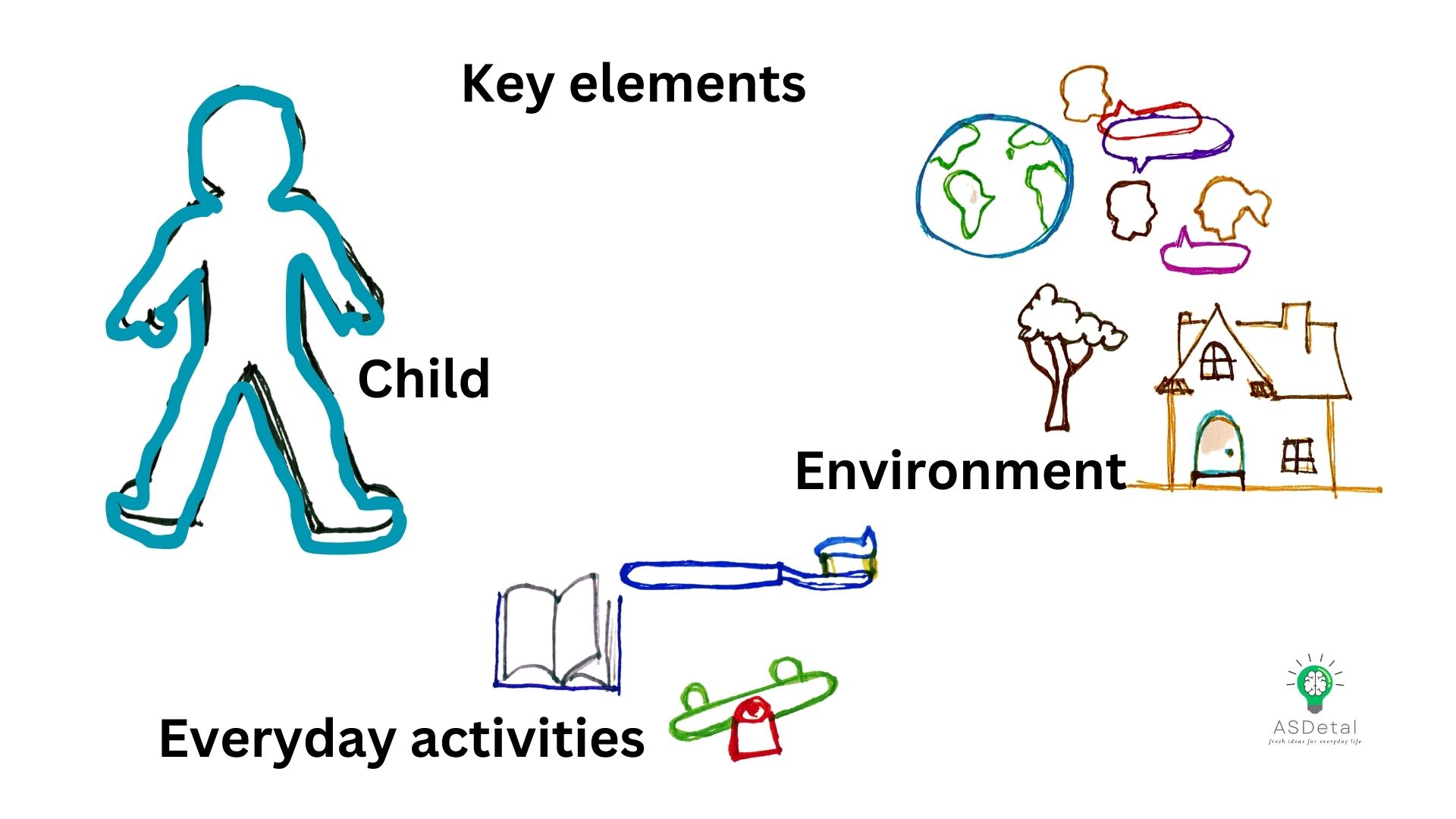
Let's drill deeper into this.
The 'goodness of fit' in the image below, or the 'sweet spot' as we may think of it, determines successful activity participation (or 'occupational performance' as OTs may call it).
How well we perform or take part in an activity is dependent on personal factors, environmental factors, and characteristics inherent in the activity itself.
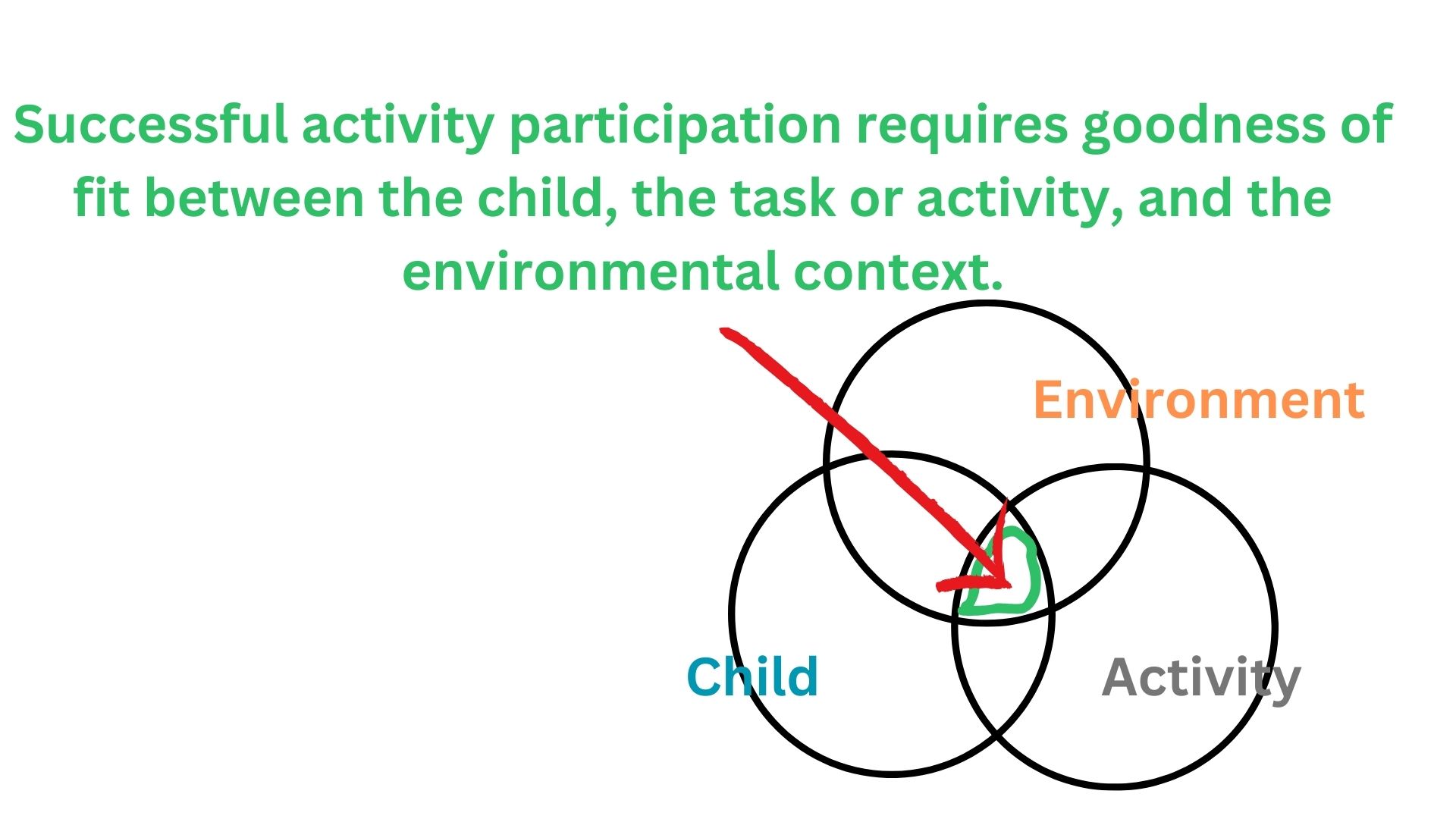
Lets look at each of these three areas in more detail. We'll start with 'the environment'. The key areas we consider when considering the impact of the environment on activity performance are :
- social and family environment eg. a child who has frequent intense meltdowns may create feelings of anxiety and tension in many families. Parents may not always know how to help or what to do. Changing the way you approach a situation (you are a key element of the social environment!) can have a powerful impact on changing the outcome of an activity, task or event.
- built /physical environment eg. many neuro-different children find mainstream school settings (an example of the built environment) can be too busy, noisy, visually overstimulating etc.
- natural environment eg. for some children, nature and animals can have a positive benefit to self-regulation. For others, the smells, buzzing insects and the like can be problematic.
- background eg. where in the world you live, wider political and cultural factors which may help or hinder activities etc. A concrete example of this in the UK right now is the difficulty parents face in getting support for their child through the EHCP process (Education, Health, and Care Planning)
You may perhaps have heard of 'the social model of disability'? This approach tends to focus specifically on how the environment can be altered or designed to make it more inclusive for a wider range of people.
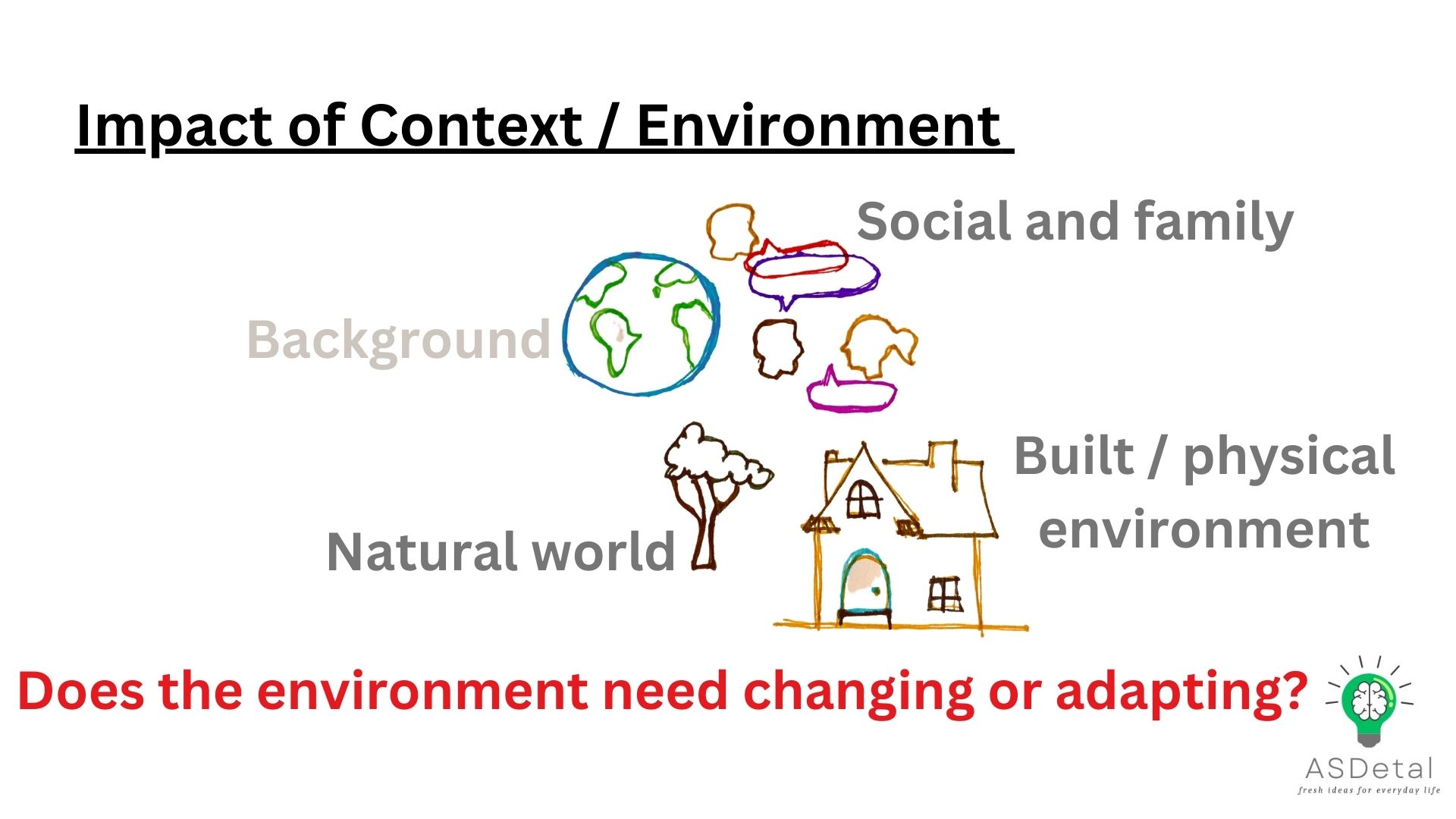
Next, lets look at the second element - the Person. We are all familiar with the 'medical model' which focusses specifically on deficits in the person. This is not a criticism, and it is a vital approach for treating illnesses and injuries. It is, however, perhaps less helpful with complex neurodevelopmental conditions such as ADHD, Autism etc.
No two children are the same, and a medical diagnosis will not provide much, if any, information about your child's functional skills. For example, some children with ASDetal have particularly poor motor skills whist others have noteworthy sporting talents. The important thing is to build up your own understanding of your child's functional skills.
We all have inherent and learnt strengths and weaknesses and your neuro-different child will have their own personal profile of strengths and challenges too.
The image below highlights some of the skill areas where neuro-different children may struggle and need active strategies to help build these skills. Mor on this later.
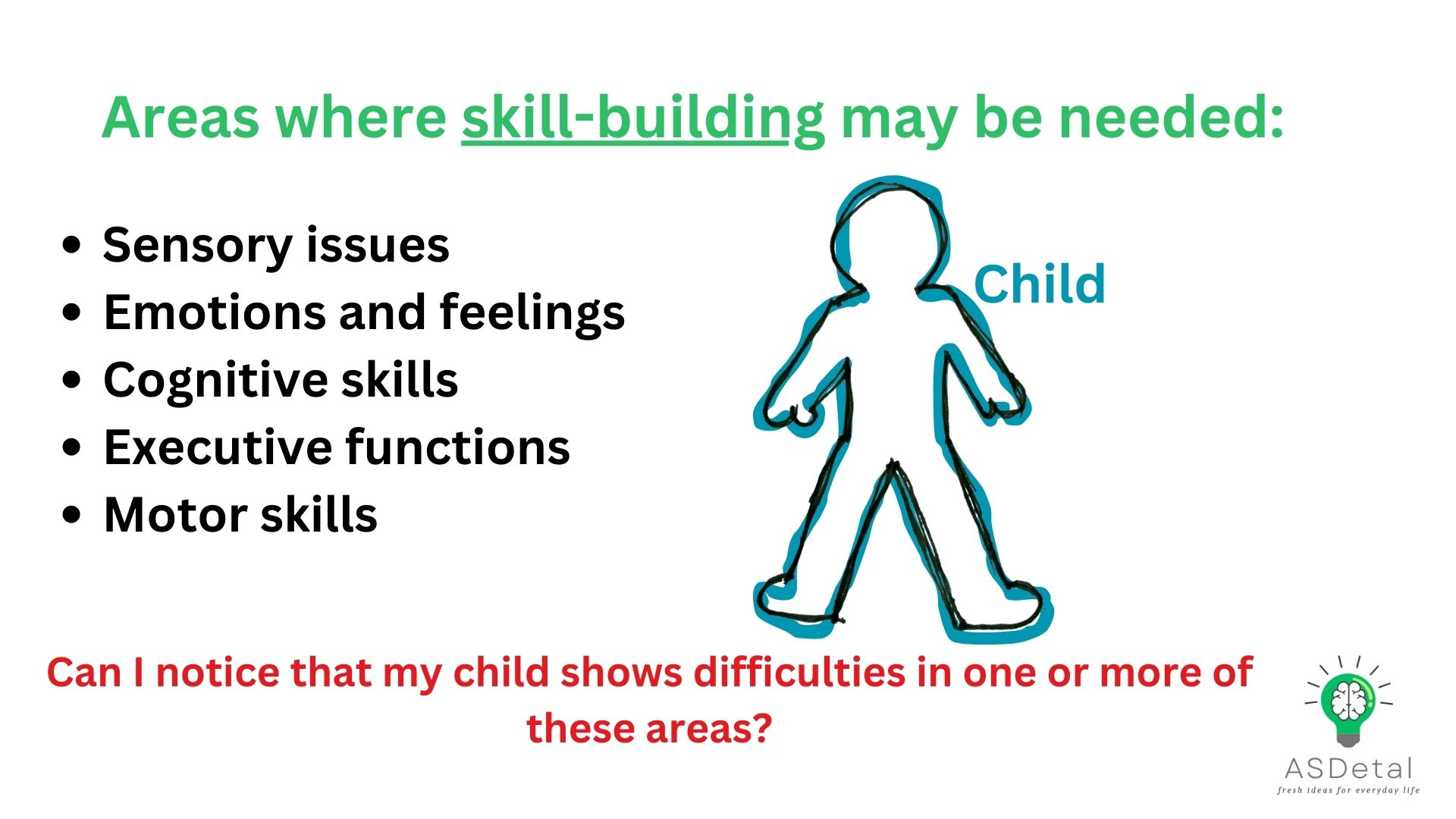
If your child has difficulty with Emotion Management or Impulse Control, these downloadable checklists may be helpful :
Strengths and Challenges Checklist : Emotion Management (SCC-EM)
Strengths and Challenges Checklist : Response Inhibition (Impulse control) (SCC-RI)
Finally, lets look at characteristics of 'the Activity'.
For children, key everyday life activities can be grouped in different ways, but I have chosen the following four:
- play (including for example variety, quality, social and independent play)
- learning (and being successful in the wider school environment) ,
- self-care (looking after self including factors such as sleep, nutrition, risk-taking etc)
- wider skills for daily life ( for example becoming independent, managing emotions, well-being, managing money, living with rules etc).
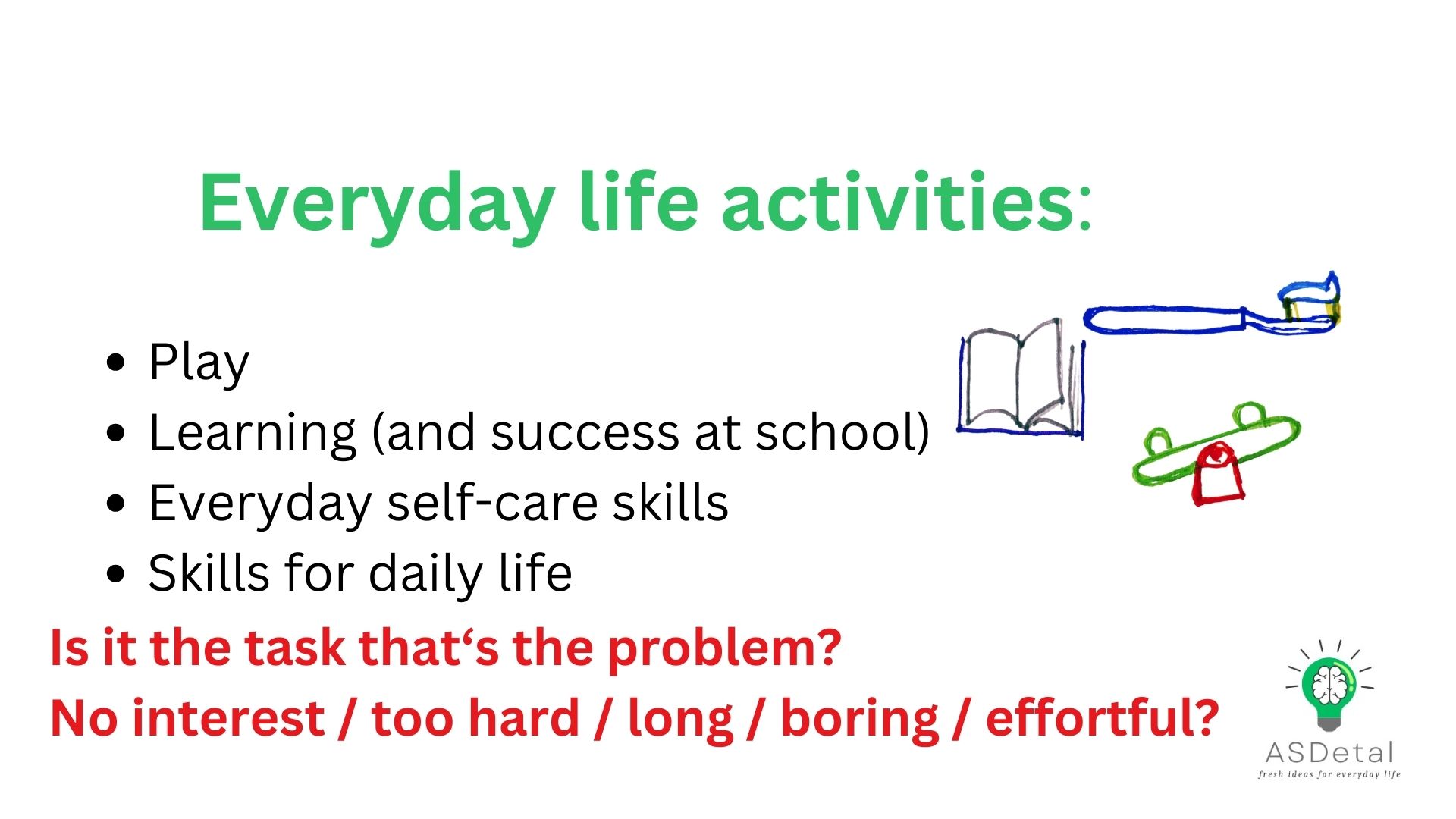
By adapting a task, or the way in which a task is carried out, we may make it easier for the child to build their skills. in performing that particular activity. For example, using a series of coloured visuals to show how to sequence the task of toothbrushing or to explain in simple terms how the brain processes emotions to help the child learn how to deal with 'big feelings'.
To conclude, being successful in doing a task or activity (optimal occupational performance ) and participating actively in valued and fulfilling everyday life activities depends on the interactions between three key areas : the person, the environment and the activity.
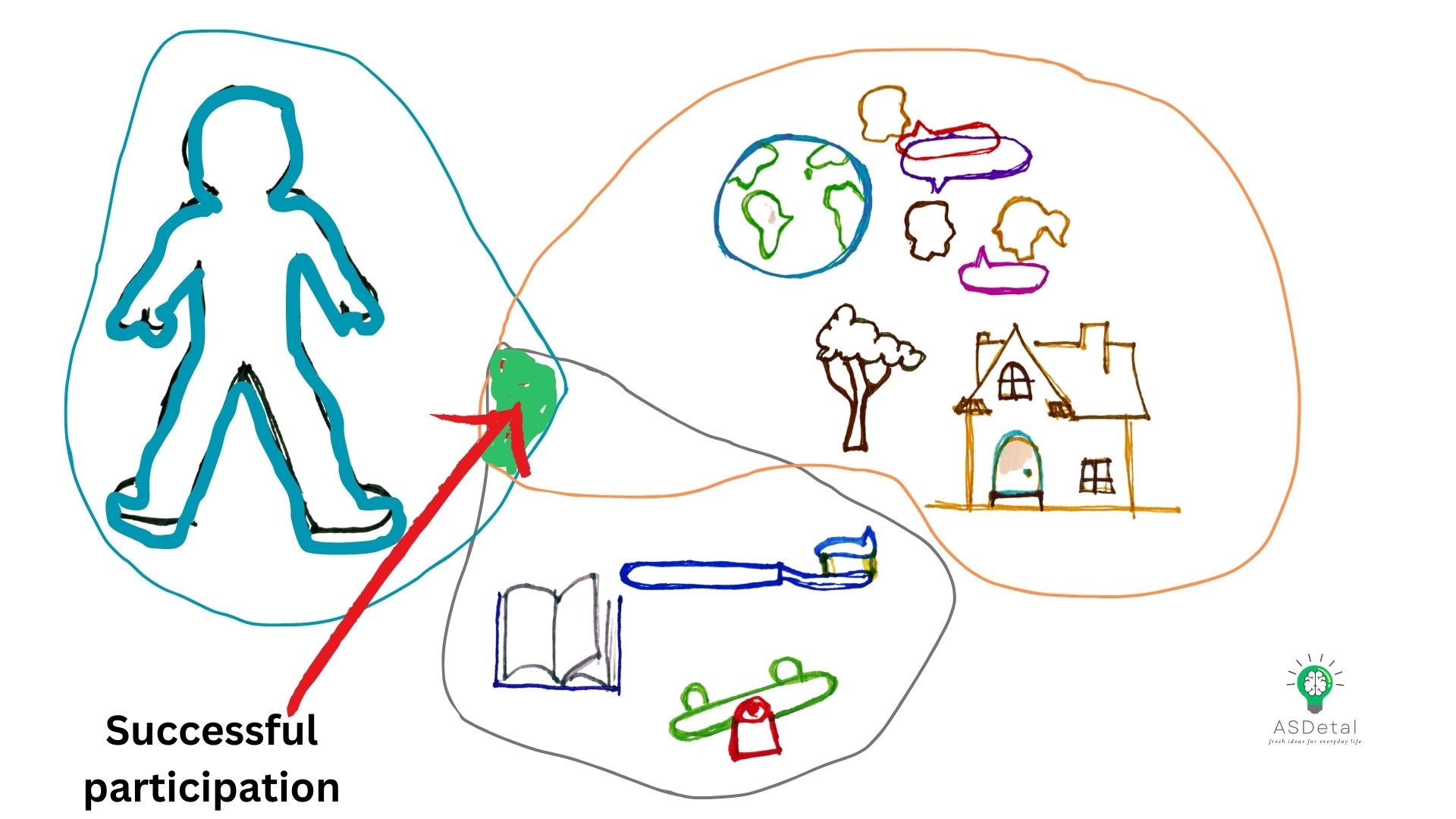
Ask yourself : 'what's not working for us?'
By making changes to one or more of the three 'domains' we have touched on above we can :

References
Law, Mary & Cooper, Barbara & Strong, Susan & Stewart, Debra & Rigby, Patricia & Letts, Lori. (1996). The Person-Environment-Occupation Model: A Transactive Approach to Occupational Performance. Canadian Journal of Occupational Therapy. 63. 9-23. 10.1177/000841749606300103.